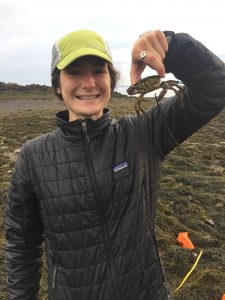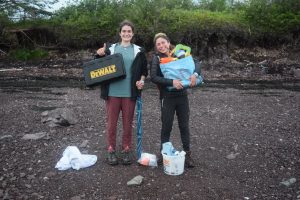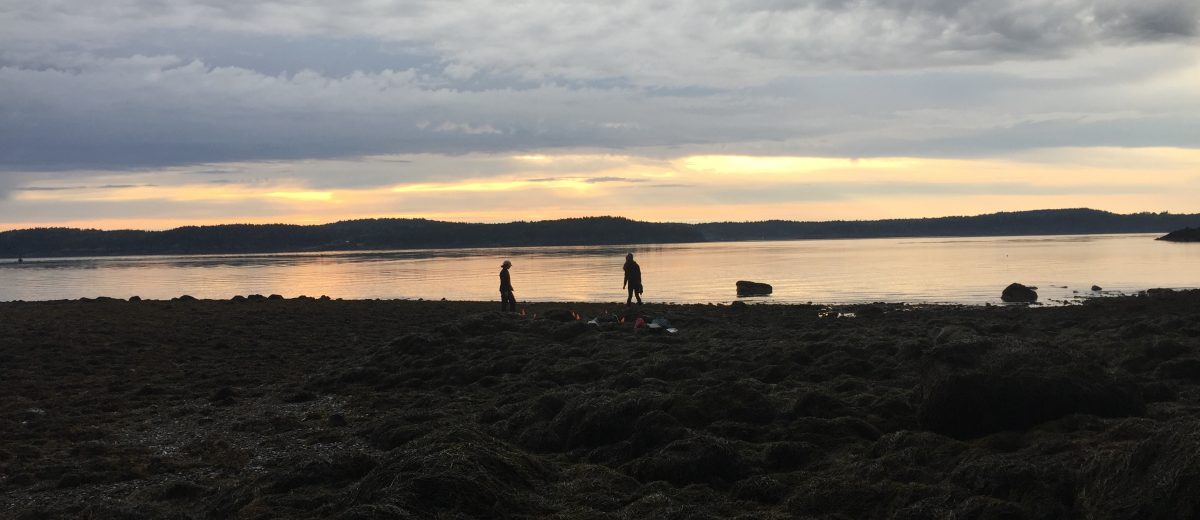Sally Burke, 2019 Colby College Intern, worked on a plethora of different projects last summer, ranging from seed and sapling phenology to projects that incorporated many different disciplines like the cross-system biodiversity project. Her favorite project was the rockweed study in the intertidal zone, led by Hannah Webber. Here, Burke describes a typical day:
The goal of this project is to determine if and how rockweed harvest in Maine would affect the intertidal zone ecosystems in which the harvesting occurred. For those unfamiliar with rockweed, it is the brown, hairy-looking algae that grows in copious amounts on rocks and boulders right at the water’s edge along much of the Maine coast. Rockweed has commercial value and is harvested at four cents a pound and can be used as an additive in fertilizer, used in some pharmaceuticals, and even in food products.

An average day working on this project was traveling to a new shoreline and setting up and installing a monitoring site that made it possible for other researchers in the future to come back and observe. We looked for bedrock that seemed flat and large enough to run two four-meter transects on the bedrock, one going north to south and one going east to west. Then we installed a waterproof temperature and light logger and a waterproof wave motion logger. Once submerged, the instruments would collect data to give us a better idea of what type of environment the rockweed and other organisms are living in. We also installed photo plots, which were basically markers to ensure that anyone who came back to the site was taking the same picture of the study site so that we can observe how the ecosystem changes over time. Then we measured the rockweed by going along each of the transects and taking the height, maximum circumference, and weight of each individual alga. All of these photos and measurements were taken to try to discern what the ecosystem and the rockweed were like before harvesting. This information will be used as a reference when researchers return to the site after harvest to see what changes occurred.
I really enjoyed working on this project because I was able to see so many beautiful places in Maine that I never would have visited otherwise. This project even took me to far downeast Maine where Jackie, Hannah, and I camped for two days (we even got to visit Canada!). This project was also very dynamic and that’s what excites me about it; on any given day, I drilled holes in rock, used a blow torch, installed photoplots with an auger, and mapped locations with a compass.
Overall my experience as a Schoodic Institute intern was very dynamic and exciting and being able to data collect and see how much work goes into creating a study is something that will help me both academically and professionally in the future.

